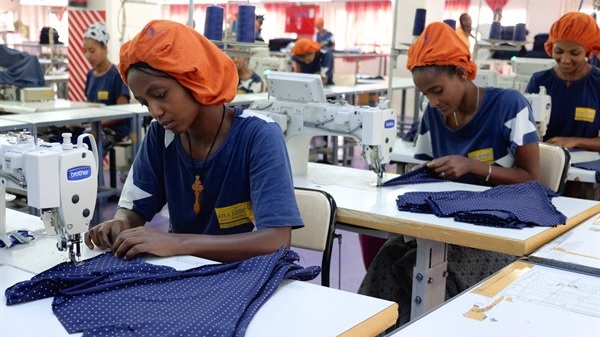
In order to achieve sustainability over the long term, Ethiopia’s nascent apparel industry must embed good business practice from the beginning.
By Lauren Shields & Margaux Yost (BSR) |
Today, Ethiopia is a small player in the apparel industry—representing less than half of 1 percent of global clothing exports. But with export earnings growing from US$60 million to US$160 million in the past five years, and the Ethiopian government setting a target to reach US$1 billion by 2020, the industry has the opportunity to drive job creation and inclusive growth. And early interest from large international buyers such as The Children’s Place signals the potential to attract more companies to increase their sourcing footprint in Ethiopia.
“In today’s global economy, brands must understand the industry needs in the new countries they source from. At The Children’s Place, our aim is to support the development of the new garment workforce in Ethiopia and do our part to bring sustainable business practices to the region.” —The Children’s Place
But in order to achieve sustainability over the long term, Ethiopia’s nascent apparel industry must embed good business practice from the beginning.
During the scoping study for our new report, “Ethiopia’s Emerging Apparel Industry: Options for Better Business and Women’s Empowerment in a Frontier Market,” BSR’s HERproject team interviewed buyers, foreign investor suppliers, government, donors, and female workers—who represent nearly 90 percent of the Ethiopian apparel workforce—to identify factors that will support inclusive growth.
Read the complete story at Business for Social Responsibility (BSR)
——
See also:
- Ethiopia Sets Its Sights on $30bn Apparel Exports
- Chinese Textile Firms Continue to Invest in Ethiopia
- Two New Textile and Garment Parks to Come up in Ethiopia
- VIDEO: Ethiopia among Top 10 Countries to Invest in Africa
- VIDEO: Hawassa Industrial Park Providing More than 100,000 Jobs to People in Ethiopia
